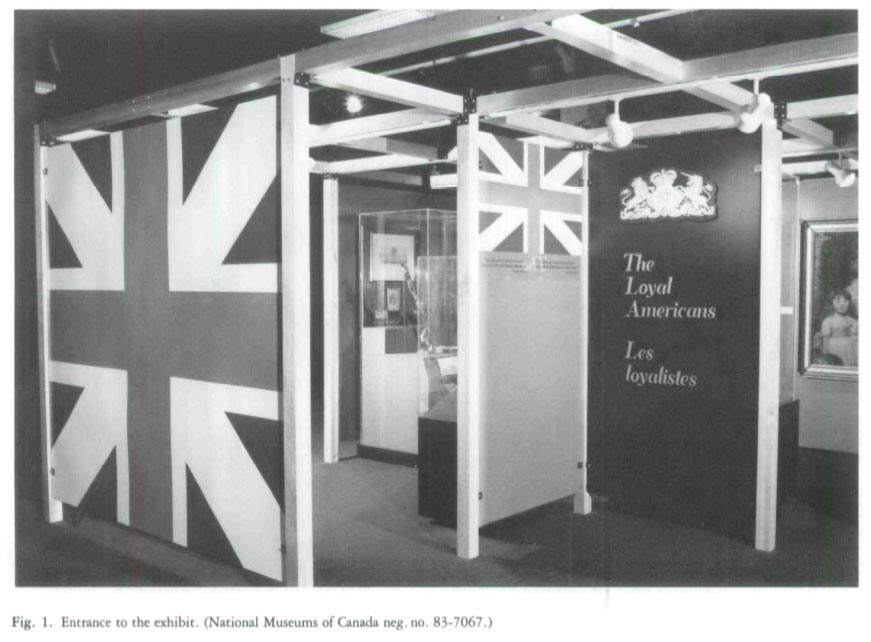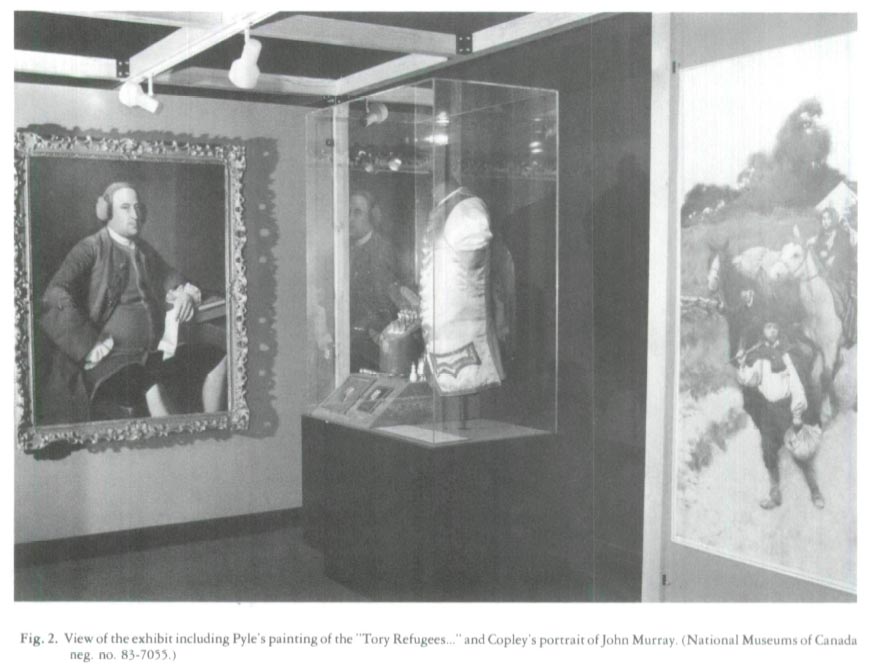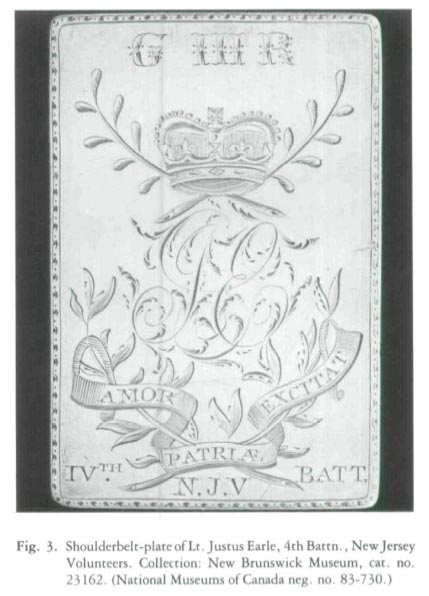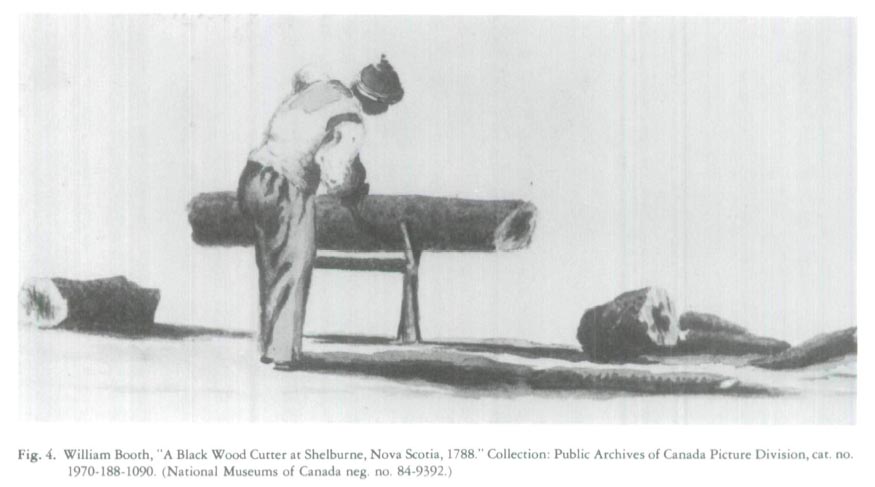Reviews / Comptes rendus
Canadian War Museum, "The Loyal Americans"
1 "I'm not sure who the Loyalists were — which side were they on?" With these words to a friend, a slightly be-mused young mother may have summed up a common American response to "The Loyal Americans" exhibit during its recent showing at the Museum of Our National Heritage in Lexington, Massachusetts. From an American perspective, the loyal Americans were the supporters of the Revolution, not those still known popularly as "Tories" or "Redcoats" who opposed that "Glorious Cause"! This woman's comment suggests some of the problems in mounting an exhibition on a trans-national subject for an international audience. Language and meaning take on unintended qualities in the crossing of international boundaries. Clearly, the history and interpretation of the Loyalist experience is caught on this divide.
2 This exhibit was organized by the Canadian War Museum and has been on display in Lexington as part of a Canadian-American tour commemorating the bicentennial of the post-Revolutionary resettlement of American Loyalists. The exhibit and its accompanying catalogue cover the social, political, and military history of the Loyalist experience during and after the American Revolution. The exhibit brings together a wealth of first-quality artifacts from twenty-seven museums, archives, and galleries, and from the collections of a number of private owners. The catalogue includes sepia reproductions of many of the exhibited pictures and artifacts, commentary on all of them, as well as eight substantive essays. The exhibit's directors are to be congratulated on assembling such a unique collection of material associated with the Loyalist experience. However, the exhibit's physical design and interpretive strategy detract considerably from the potential impact of the subject.
3 Those members of the American audience who took a serious look at the exhibit were soon informed of the Loyalists' true identity. The exhibit is organized in a simple and straightforward chronological sequence. The first display presents "The Foundations of Loyalism," with a useful interpretive panel, portraits of George III and Sir William Johnson, and a dramatic photographic blow-up of the royal Proclamation for Suppressing Rebellion and Sedition. The second heading, "The Loyalist Provincial Corps," occupies approximately one-half of the total exhibit, reflecting both the survival of military artifacts and the priorities of the exhibitors. This section features portraits of Allan MacLean of Torloisk, Joseph Brant, Count Rumford, and several less well-known Loyalist officers, uniforms, muskets, swords, battle flags, and camp furniture. From a social historian's perspective, the most interesting items were the wonderfully carved powderhorns and engraved shoulderbelt plates, whose individualized qualities provide an interesting entry into the Loyalist mentality. The third section presents a brief discussion of "The Evacuations," which for many Americans must have evoked memories of Saigon in 1975. This section must have been particularly difficult to find materials for. The reproduction of the 1782 British cabinet minutes suggesting the withdrawal of British and Loyalist forces, and the dramatic (if romanticized) Howard Pyle painting of Tory Refugees on Their Way to Canada were quite effective. In the fourth section, the exhibit and the catalogue part company, if only temporarily. Four essays in the catalogue recount in some detail the history of Loyalist settlement in Nova Scotia and Prince Edward Island, New Brunswick, Quebec, and Upper Canada. The exhibit, perhaps wisely, consolidates these topics under the heading of "Settlement." The most striking materials in this section are a number of contemporary watercolours depicting life in the raw, new Maritime frontier in the 1780s and 1790s. Finally, the exhibit and catalogue close with a consideration of "The Loyalist Spirit" (exhibit) or "Loyalist Tradition" (catalogue): the contribution of Loyalists to the forging of a Canadian national identity.
 Display large image of Figure 1
Display large image of Figure 1 Display large image of Figure 2
Display large image of Figure 24 Unfortunately, the virtues of the simple chronological development of the exhibit are seriously obscured by the structure in which it is fixed. The exhibit is housed in a maze-like framework of 4" x 4" pine posts and beams, prefabricated for use in various locations. Though this structure was apparently required to meet the long-range needs of this travelling exhibit, it has a series of unfortunate effects which detract from the exhibit's effectiveness.
5 First, there is the basic problem of finding the beginning of the exhibit. The visitor is introduced to "The Loyal Americans" by a broad panel bearing an introductory exhibit title and a long arrow pointing to the left. Visible to the right is the back of Lt. Jeremiah French's uniform; groups with small children were immediately diverted to the right, and entered at a point about a third of the way through the exhibit. More disciplined viewers followed the arrow to the formal exhibit titles in a sort of vestibule with the red ensign displayed on one of several blank walls. It is at this point that even the most seasoned museum-goer would lose his way. There is absolutely nothing in the "vestibule" area to direct the viewer to the initial section on "The Foundations of Loyalism," which involves a sharp turn to the right down a short passage. In the complete absence of any indicator pointing toward the first section of the show, his attention would be attracted by the only display material in sight: the final elements of the section on "The Loyalist Spirit" which can be seen on the far side of the second set of title panels. Beginning here, many viewers worked their way through the exhibition backward.
6 While the layout of the exhibit thus poses a simple problem of entry, the overall design creates an oppressive and claustrophobic feeling. To work through the sequence of the exhibit, the viewer must follow an intricate path through a series of baffles and crosscutting panels, which as already seen, pose certain navigational problems. More important, however, the post and beam construction defining the exhibit boundaries (in three dimensions) imposes a real sense of confinement. First, the floor space within each display area is quite constricted. This lack of space required the mounted of clear plexiglas panels to protect portraits and maps from viewer contact. This plexiglas, in turn, has the unfortunate effect of reflecting glare and the light of seventy-five-watt floods mounted immediately above the viewer's head on the exhibit's cross beams (see fig. 2). The overall feeling of confinement is offset somewhat by the pale green and okra colour of the display panels, but is still unfortunate.
7 Finally, there is the problem of interpretive labelling, an issue which engenders much debate among all museum staffs, and which must be a particular point of contention in a country where official bilingual standards require two sets of labels. The introductory panels for each section are excellent; twenty to thirty lines of prose in three-quarter-inch lettering provide just the right amount of overview information. The problem lies with the labelling of the objects on display, which is the absolute minimum required to identify the artifact and give its provenance. Unless they have intrinsic artistic qualities, artifacts without interpretive labelling lie inert for the average museum-goer; minimal labelling may be less expensive, but the result is a lost opportunity to engage the audience's attention with the material. This problem is compounded by the occasional mismounting of objects. For example, the exhibit included a number of ornamented powderhorns: what was the significance of the floral designs, domestic scenes, and full-rigged ships carved on them?
8 The exhibit offers no attempt at interpretation, and the carvings themselves are obscured because the objects are wired flat against the display surface. Similarly, what was the significance of the hole in the Copley portrait of Colonel John Murray of Rutland, Massachusetts, or the initials replacing the royal crest in the shoulderbelt plate of Lt. Justus Earle of New Jersey (see figs. 2 and 3). To be fair, it must be said that many such questions are answered in the catalogue (the hole in the Murray portrait was punched by a Patriot crowd in 1776), and presumably the minimum labelling was based on the assumption that the audience would follow the catalogue. The Museum of Our National Heritage did report record sales of the catalogue, and perhaps many did read their way through the show. However, at $15 a copy, the cost would be prohibitive for the average viewer.
9 The record sales of the catalogue, and the American response to the show, point to a broad interpretive problem with the exhibit. The staff of the Museum reported that the only reaction from the viewing audience was by Americans of Loyalist background, and that the sale of catalogues was fuelled by an interest in Loyalist family roots. These people must have been surprised to read in the exhibit that "the irreconcilable hatred bred by the rebellion precluded any possibility of [the Loyalists'] returning to their former homes and neighbours." Obviously this hatred was real and lasting for many; but for many others it was followed by a more powerful disillusionment with Britain and the raw, rough life on the Canadian frontier. The local history of the United States at the turn of the nineteenth century, particularly that of New York and the mid-Atlantic states, is liberally sprinkled with returned Loyalists, gradually and unobtrusively re-entering the American mainstream, rejoining the republican experiment.
 Display large image of Figure 3
Display large image of Figure 310 This blind spot is one symptom of a broader problem with the exhibit when seen through American eyes: the failure to deal creatively with the rich paradox suggested in the title of "The Loyal Americans." At least an element contributing to the bittersweet quality of the Canadian-American relationship must lie in Canadians' and Americans' common colonial origins and the drama of the Revolutionary separation. To this reviewer, an American social and political historian, the fascination of the late eighteenth century lies in the flux and fluidity of the North American social mosaic in a generation of revolutionary turmoil, a flux and fluidity which was critical in producing the Loyalist impulse. Loyalist ranks were composed of royal officeholders, urban merchants, Hudson Valley tenant farmers, Huguenot, Quaker, and Dutch burghers, Highland Scots immigrants, Scots-Irish frontiersmen, and thousands of black slaves. Each sought safety, order, and even freedom in opposing the Revolution of the Anglo-American majority. It was exactly this sense of flux and fluidity which was missing from the exhibit. Its focus is on the "great white men" of the Loyalist movement. We see the portraits, uniforms, and furniture of the gentry leadership, but not the experience of the poorer rank-and-file.
11 A concrete manifestation of this broader problem can be seen in the exhibit's only interpretive map of eighteenth-century North America. Revolutionary America is presented literally as a blank expanse of undefined territory punctuated with scattered battle sites, rather than as a complex tapestry of provinces, peoples, cultures, and economies. (Even some of the battle sites are misplaced: Bennington is in southern Vermont, not next to Lake Champlain.) Similarly, just as the Canadian organizers of the exhibit betray a certain lack of interest in the eighteenth-century American social landscape, this American reviewer must confess his ignorance of eighteenth-century Canadian social topography. Both the exhibit and the catalogue would have benefited from interpretive maps of eighteenth-century North America, indicating the diversity of peoples who joined the Loyalist cause in the American colonies, showing the areas of pre-existing French and "Yankee" settlement in Quebec and Nova Scotia, and pinpointing the districts taken up by the Loyalist settlers. Such a series of interpretive maps would drive home to both Canadians and Americans the complex linkages between particular regions of their two countries, and reinforce the ironic force of the exhibition's title.
12 The contributors to the catalogue make more of an effort to capture a sense of this diversity, looking at the diverse motivations of white Loyalists in a series of useful essays. Yet even here there is a failure to recognize the role of black Americans (and Canadians) in the loyalist cause. Given the current state of historical knowledge, it is simply unacceptable to say that "[m]ost slaves, systematically denied experience in decision-making, were simply unable to respond" to British calls to escape slavery by opposing their rebel masters. The work of Benjamin Quarles, recently reinforced by that of Sylvia Frey, has chronicled the black contribution to the British cause during the Revolution. By the accepted estimate, at least 100,000 slaves escaped from American plantations to the British Army, in an exodus which can be compared to that of slaves to the Union lines during the Civil War. Frey's article recounts the sacrifices made by these slaves: arduous work on fortifications was followed by death from smallpox and famine for many thousands. At least a minimal recognition of this sacrifice is surely due in a bicentennial exhibition.1
 Display large image of Figure 4
Display large image of Figure 413 With this important exception, however, the catalogue does bring together a significant historical synthesis of the Loyalist cause. But this is a synthesis which is at odds with the exhibit in important ways. This disjunction is most pronounced in the final section on the meaning of Loyalism in the Canadian national heritage. The exhibit presents "The Loyalist Spirit": a celebration of the contributions of the Loyalist gentry to Canadian nationality, complete with artifacts from an earlier celebration — the 1883 centennial — and evocations of the patriotic sentiments of "King and Empire." On the other hand, some of the contributions to the catalogue, particularly Ann Gorman Condon's analysis of "The Loyalist Tradition" and George A. Rawlyk's discussion of settlement in Upper Canada, stress the distinction between "fact" and "mythology" in their subject, and make some quite sharp criticisms of the "spirit" which the exhibit celebrates. In the United States, the "lost causes" of the 1860s and the 1960s have engendered much passionate debate and cast long shadows over American political culture. Clearly, an earlier American "lost cause" — that of the "Loyal Americans" — still has its repercussions among twentieth-century Canadians.
Curatorial Statement
14 In October 1979 the Canadian War Museum began preparations for a special exhibition to commemorate the arrival and settlement, from 1775 to the 1780s, of the Loyalists in what later was to become Canada. The exhibition, entitled "The Loyal Americans," opened in Ottawa in June 1983, and thereafter travelled to Lexington, Massachusetts, Middleton, Nova Scotia, and Saint John, New Brunswick. A second version was assembled to circulate in several Ontario centres during that province's bicentennial year, 1984. The important thing about this story, from the point of view of the Canadian War Museum, was that the majority of the 40,000 or so Loyalists were either soldiers, or the wives and children of soldiers. Their impact on the growth of a Canadian collective consciousness was unique and profound. Though the Loyalist mystique is no longer as strong today as it once was, yet it is clear that Canada's cultural and political institutions still bear the imprint of the contribution made by the Loyalists and their nineteenth-century descendants. Nearly half of the 40,000 Loyalists came to Nova Scotia; and of the rest, 14,000 settled in what soon became the Loyalist province of New Brunswick, perhaps 1,500 in Quebec, and fewer than 5,000 in Upper Canada.
15 Though "The Loyal Americans" is primarily about the loyal citizen-soldiers of the American colonies, we were concerned not to limit our interest to their military exertions. We wished also to illustrate the disruptions brought about by abrupt departures from long-established homes, and by the strain of settlement in strange new provinces or, in the case of what were soon to become New Brunswick and Upper Canada, in virgin wilderness.
16 The most crucial reality faced by the Canadian War Museum in organizing "The Loyal Americans" was the dearth of suitable works in our own collections. We ourselves could hope to muster no more than two dozen artifacts, of only ordinary significance in the case of most of the material. We therefore carried our tale of woe to our colleagues in the New Brunswick Museum, which houses the largest and most significant single collection of civilian and military Loyalist material anywhere. Our proposal that we undertake an exhibition in collaboration was well received, and "The Loyal Americans" was scheduled to serve as the New Brunswick Museum's commemoration of the founding of the province of New Brunswick in 1784. Thereafter we canvassed numerous other institutions and private collectors, many for the first time. We developed important relationships with historical associations in many Loyalist communities, which allowed us to borrow important material from Loyalist descendants with family collections.
17 Ultimately "The Loyal Americans" included artifacts and works of art from no fewer than thirty-six different sources. Of 172 catalogued items in the exhibition only 14 per cent are from the Canadian War Museum; just over 20 per cent were selected from the New Brunswick Museum. A full third of the exhibition was borrowed from another eighteen institutions in eastern Canada, the United States, Great Britain, and as far abroad as the German Federal Republic; and 27 percent were borrowed from private collections. The remaining 4 1/2 per cent represent photographic blow-ups put together in the Canadian War Museum shops.
18 The first half of "The Loyal Americans" is concerned with the military side of the Loyalist saga as it unfolded in the Thirteen Colonies between 1775 and 1783. There are featured representative selections of uniform, weapons, regimental insignia, and accoutrements, as well as numerous portraits and views. Besides being generally representative of the ordinary Loyalist soldier, many of the works exhibited in this part are of a striking rarity. Particular attention must be brought to the uniforms of four Loyalist provincial regiments.
19 The second half of the exhibition is devoted to the settlement of the Loyalists in British North America. Here the works illustrate the social side of the Loyalist story: a travelling chest, documents, currencies, building tools, more portraits and views, fine furniture, and quality silver, porcelain, and china. This material, however, suffers slightly from not being quite as representative of the everyday life of the ordinary Loyalist as in the first half of the exhibition. The surfeit of commonplace, everyday artifacts generally survives less well than do the accoutrements and symbols of one's military experience, however brief.
I would like to thank Dr. Clement Silvestro and the staff of the Museum of Our National Heritage and Professor Gerald Gill of Tufts University for their assistance in the preparation of this review.